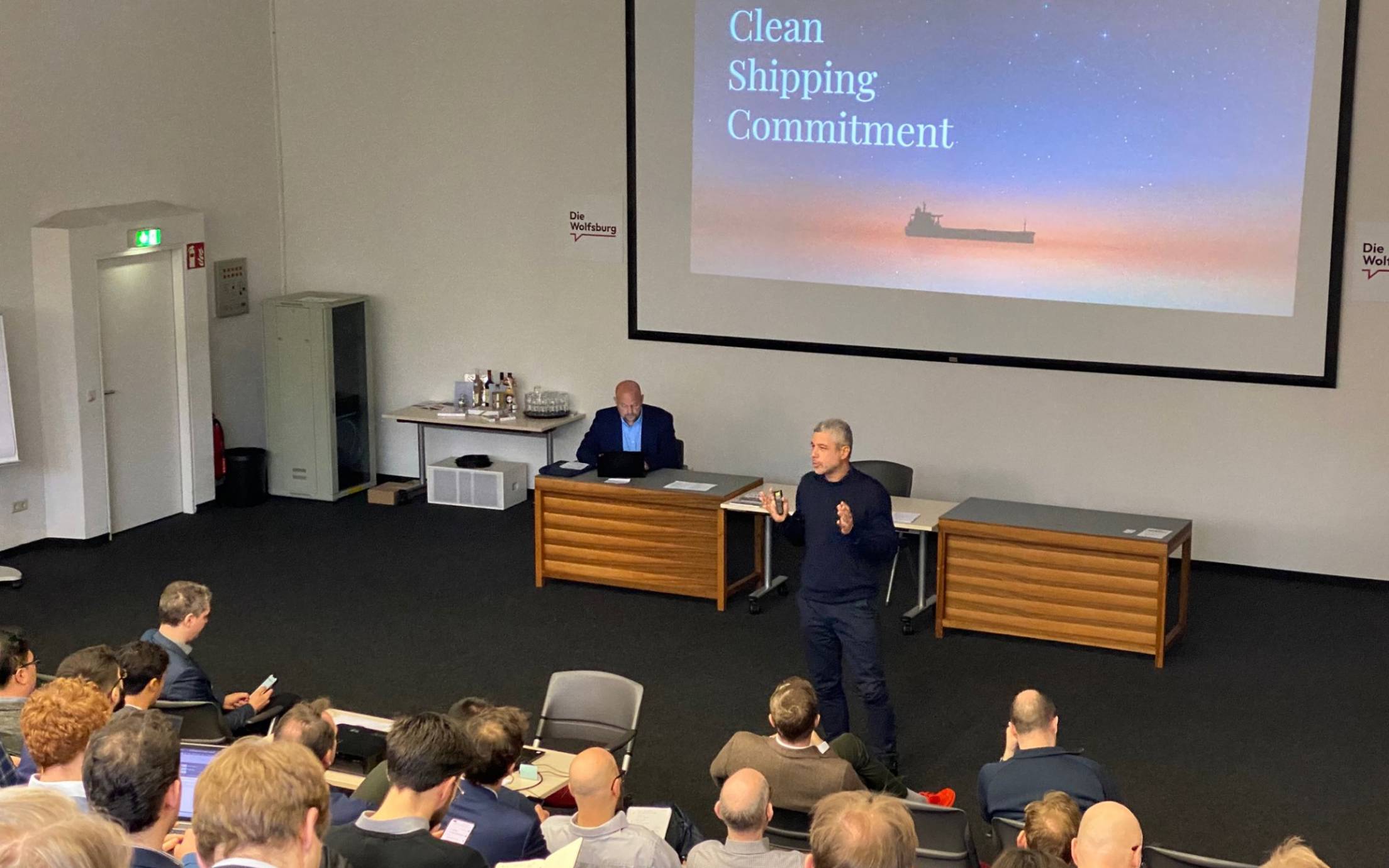For many shipowners the COVID-19 pandemic has meant a sudden and dramatic loss of business which has been compounded by problems for vessels calling at ports, entering drydock yards for planned repairs and restrictions on movement of people preventing crews from being changed.
Krapp says that the effect of the pandemic has hit some sectors much harder than others. Cruising came to a complete halt; container lines are cancelling sailings, putting vessels into lay-up or sailing virtually empty; car carriers have seen demand for their services evaporate. Bulk carriers have also been affected but oil and gas carriers less so. Ironically much of the demand for tankers is not for transport but for storage so these ships too will spend long periods immobile.
A drop in demand for newbuildings is noticeable and points to the problems likely to be medium if not long term. Krapp also highlights the fact that geopolitical tensions were having a dampening effect on trade volumes even before the virus hit and these appear less likely to be resolved any time soon.
As a consequence of these problems, owners may be forced to put vessels into lay-up. Whether that will be so-called hot or cold lay-up depends upon when the owner expects demand to pick up and how quickly they will want to bring the vessel back into service. Classification societies have rules and give guidelines on what to consider in the event of vessel hot and cold lay-up. These rules and guidelines set focus on both the vessel integrity and the security of the environment.
Early action on coatings is key
“It is clear that these rules have to be followed. But further considerations are essential from a coatings’ perspective: if a vessel has considerably reduced activity both through slow steaming or hot or cold lay-up, the underwater area will be exposed to an increased risk of fouling settlement. This risk is clearly a function of idling/lay-up location and length of non-activity,” says Krapp. “It is highly recommended for the coatings maker to be consulted at an early stage to prevent problems later”.
“The very first consideration to be taken is thus the exact location on where a vessel is staying for idling or lay-up. Once the location is chosen, it is certainly a good advice to follow - from day one of the reduced activity - a plan on how to manage the hull performance, as it is always much easier to keep a vessel in an acceptable condition with regard to fouling than trying to rectify it after an extensive period of reduced activity with potentially an accumulated fouling layer, says Krapp.
“Once a ship is idling visible fouling can start to settle in just a few days. The main factors to determine how quickly fouling develops are the type and age of the antifouling system, the water nutrient levels, the water temperature and the exposure to light. In case a vessel is idling or laid up close to coast in tropical waters with an antifouling system at the end of its lifetime, it is almost guaranteed that fouling will settle in terms of days. First microfouling (slime and algae), then hard fouling like barnacles will start to colonize the hull. It is noteworthy that barnacle fouling is subject to seasonal variations, which in turn depend on the specific location. If one is unlucky with the place and time, barnacles can start growing in terms of days or few weeks. Fouling can easily be removed by cleaning in the early stages, but very difficult once hard fouling starts to develop. So it’s also important to take into consideration how to manage hull performance over the period of low activity,” Krapp explains.
Another aspect of lay-up that needs consideration is the increased risk of corrosion in ballast and other tanks. In the case of ballast tanks, the level of seawater in the tank will not change over a long period of time, exposing the water line to an increased risk of corrosion, as this risk is elevated at the interface between air, seawater and tank surface in the water line. This can be managed by either emptying and drying out the tank or filling them completely, or ensuring extra corrosion protection, for example, by using sacrificial anodes.
Krapp continues, “In lay-up it is usual for crew numbers to be reduced and this clearly has consequences for maintenance regimes. If the usual continuous maintenance stops up due to reduced manpower on board in a lay-up situation, the risk of increased corrosion on board increases. It is therefore good practice to continue the on-board maintenance even when the crew on-board is reduced. In short, our advice focuses on getting the vessel as easily back into regular service as possible and to reduce the detrimental effects of low activity on the vessel”.
Input from coating makers can make a difference
According to Krapp there are two main ways coating manufacturers can assist shipping companies: they can provide coatings that can deal with situations of reduced activity better than others and they can provide advice and guidance on how to best deal with the situation, given the specific coatings applied on a specific vessel. “The first option applies of course only when it is possible to apply a suitable product in advance of the idling period. But in a large number of cases, it is guidance on how to handle the increased risk of fouling and corrosion for the specific vessels in question that coating manufacturers can provide, based on their core competence of understanding fouling and corrosion risk factors,” says Krapp.
When it concerns Jotun, the company builds on its two major “assets” to support shipping companies: coating products and expert knowledge. As an example in the antifouling product portfolio, Jotun provides coatings that allow vessels to stay inactive for several months, and still keeping the risk of fouling very low. Jotun also advises its customers on how to plan extended idling or lay-up through detailed analysis of the risk for fouling for the specific vessel given its existing coating scheme and given the intended area for lay-up or prolonged idling.
“The best advice to handle a period of extended idling or lay-up is to regularly inspect the underwater hull and, based on the inspection results, to eventually initiate proactive, soft cleaning,” says Krapp and adds, “In this way, the antifouling system is kept intact and the risk of extensive fouling is minimized. Jotun has started to provide and help customers with underwater inspections and cleaning through its Hull Skating Solutions, which is an active means to manage hull performance over the period of low activity.”
Speed runs to dislodge fouling is a practice that is sometimes used for idling vessels but according to Krapp this approach is questionable as fouling is not consistently and adequately removed. “In the case of self-polishing antifoulings, removal of a leached layer might not be achieved. In the worst case, moving the vessel for a few hours, will, in the case of a biocidal antifouling, reduce the concentration of biocides at the coating surface and reduce the protection against fouling. If a vessel can shift position it should move to one less prone to fouling. Moving into fresh water for a period of time would effectively kill the saltwater fouling but care is needed with extended lay-up periods in fresh water, as this can lead to swelling of the coating film,” Krapp points out.
Effective means to reduce fouling risks and save money
In the case of reduced activity, Krapp says the most effective way to protect the underwater area from fouling by means of a coating is to make sure that a sufficient concentration of broad-spectrum biocides is available at the coating surface. “If this is ensured then the need to mechanically remove fouling through cleaning is minimized. Biocidal antifoulings that are designed to dissolve even in case a vessel is not moving and that have a strong biocide package are therefore the best choice today.
“However, even with the best solutions on the market today, during an extended period of lay-up there remains a risk of fouling,” warns Krapp. “It is therefore the combination of a good coating and a regular inspection regime combined with eventual soft, proactive cleaning that reduces the risk of fouling settling permanently,” adds Krapp.
Some of these actions have cost implications and in times when fuel is cheap and ship speed not essential owners may baulk at further expense. But as Krapp points out, the penalty for not keeping the hull clean will still mean a 10-15% increase in fuel consumption that also has a price and potentially one that lasts through to the next drydocking.



